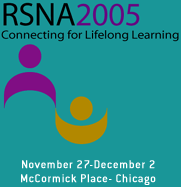
Abstract Archives of the RSNA, 2005
Fiona Jane Gilbert MD, Presenter: Nothing to Disclose
Magnus A McGee, Abstract Co-Author: Nothing to Disclose
Susan Mary Astley PhD, Abstract Co-Author: Nothing to Disclose
Caroline R M Boggis, Abstract Co-Author: Nothing to Disclose
Pamela Mary Griffiths BA, Abstract Co-Author: Nothing to Disclose
Stephen W Duffy, Abstract Co-Author: Nothing to Disclose
Maureen GC Gillan PhD, Abstract Co-Author: Nothing to Disclose
et al, Abstract Co-Author: Nothing to Disclose
CAD has been designed to aid human detection of breast cancer either by reducing oversight or by detecting cancers at an earlier stage. Cancers detected by a single reader with CAD compared to previous double reading was evaluated to determine how prompting is affecting reader behaviour in screen detected and subsequently diagnosed cancers.
At two UK Breast Screening centres 10,267 mammograms from 1996 including 90 screen detected cancers and 233 screening mammograms where cancers were detected thereafter, previously double read, were re-read by a single reader using CAD. The single reader with CAD performed at least as well as previous double reading. Mammograms were independently reviewed by an experienced radiologist using the diagnostic mammograms and pathology data. For each case, the lesion type, morphology, location and prompt type were recorded and whether the reader marked the lesion for recall.
CAD prompted the lesion in 83 (92%) of the evaluation screen-detected cases, 16 (31%) of the interval cases following the evaluation screen, 16 (17%) of the subsequent screen-detected cases and 7 (8%) of the following interval cases with the reader acting on 76(92%), 9(56%), 9(69%) and 2(29%) of these cases respectively. Of the 37 cancers not detected in the original double reading but detected by the single reader with CAD the system prompted 16 (43%)cancers. The single reader recalled 98 of the 120 prompted cancers and 29 cancers not prompted by CAD of which 8 had been previously detected by 2 readers and 21 diagnosed in the following interval or subsequent screen.
CAD identified the majority of screen-detected cancers, nearly a third of the subsequent interval cancers and almost 20% of next round cancers. The radiologist acted on a proportion of those subsequent CAD-prompted cancers and was not adversely influenced when CAD did not prompt an abnormality. It may be that the act of re-examining the mammogram improves reader performance.
F.J.G.,S.M.A.: Fiona J Gilbert and Susan M Astley acknowledge the loan of ImageChecker CAD systems from R2 Technology for this study.
Gilbert, F,
McGee, M,
Astley, S,
Boggis, C,
Griffiths, P,
Duffy, S,
Gillan, M,
et al, ,
The Effect of CAD Prompts on Reader Behaviour: UK Screening Programme Evaluation. Radiological Society of North America 2005 Scientific Assembly and Annual Meeting, November 27 - December 2, 2005 ,Chicago IL.
http://archive.rsna.org/2005/4407811.html

